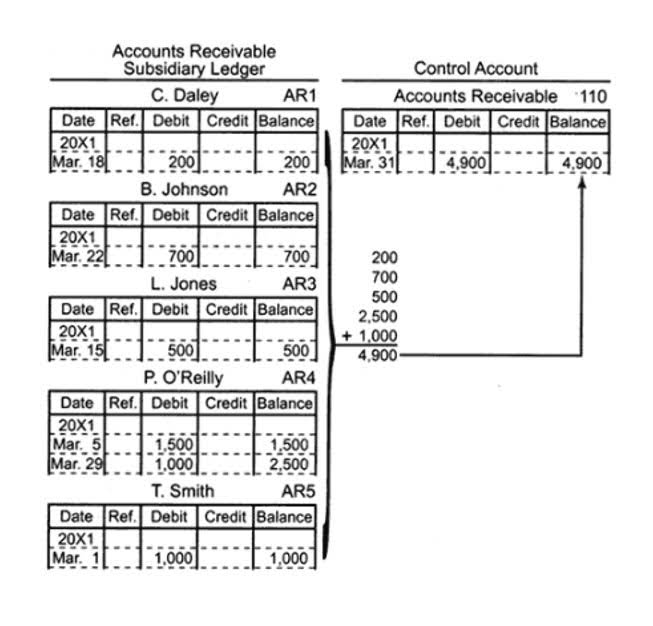
You can calculate FCFE from EBITDA by subtracting interest, taxes, change in net working capital, and capital expenditures – and then add net borrowing. The net income to FCFF calculation returns $49,095M, closely aligning with the NOPAT to FCFF calculation of $50,052M. This proximity is due to Microsoft’s similar NOPAT ($71,723M) and net income ($72,361M) figures, coupled with the company’s minimal interest expense for FY 2023. This section https://www.bookstime.com/articles/prepaid-expenses discusses the standard free cash flow to the firm (FCFF) formula and explains its formula components in-depth. Like operating margin, it is a trusted metric of a company’s profitability and efficiency and its earnings quality.
Levered and Unlevered Free Cash Flow

To calculate payment to suppliers, we first need to calculate inventories purchased which equal closing inventories balance plus cost of sales (net of any depreciation and amortization) minus opening inventories balance. Next, we need to find payments to suppliers which equal inventories purchased plus opening accounts payable minus closing accounts payable. This is another important measurement metric that helps explain how efficiently a company is using its assets to generate cash flow. The higher the return on assets, and the higher the cash flow from the operation, the higher would be the value of this metric. Now, to calculate the cash return on assets ratio, just divide the cash flow from operations with the net value of the assets. The cash flow from operation ratio measures whether the cash flow is adequate for a company to carry out its operations.
Free Cash Flow to the Firm (FCFF) vs. Free Cash Flow to Equity (FCFE)
- This article will show you how to calculate and interpret free cash flow to the firm (FCFF), also known as unlevered free cash flow (UFCF).
- FCFE is a crucial metric in one of the methods in the Discounted Cash Flow (DCF) valuation model.
- In the direct method, each cash inflow and cash outflow related to cash receipts and payments are shown, while the impact of accruals is eliminated.
- DCF Analysis is a valuable Business Valuation technique, as it evaluates the intrinsic value of the business by looking at the cash-generating ability of the business.
- Specifically, the focus on non-cash NWC changes within the FCFF formula evaluates the company’s utilization of non-cash assets for operational funding and covering short-term debts.
This can result from short-term issues, such as inventory problems or one-off customer concerns, or long-term challenges like declining sales or weakened relationships with customers and suppliers. The cash flow from operations ratio is a metric that is widely used in the financial market that helps the management, investors and other stakeholders of the organization to evaluate its ability to generate cash for the business. It is the main source of fund needed to meet the operational expenses of its core activities. Cash Flow From Operations provides a measurement of cash inflows and outflows for a specific period of time, usually quarterly or annually. CFO excludes cash flows from investing and financing in order to focus on the cash flows for the ongoing operations which will determine the long term success of the company.

Operating cash flow
Analyst’s community looks into this section with hawkeye as it shows the viability of the business conducted by the company. The Cash From Operations (CFO) to FCFF formula provides a straightforward method for estimating the FCFF directly from its operational cash flows. This approach simplifies the calculation of FCFF, focusing on cash generated by the company’s operations before financing and investing activities are considered. However, this formula may not capture all nuances of a company’s operational cash flows, especially for firms with significant financing activities cfo formula or investments. The dependence on net income might also mask real cash flows due to accounting conventions and non-cash expenses. This method is advantageous as it begins with EBITDA, offering a clear view of operational cash flows before the impact of financial structure, taxes, and non-cash accounting items.
- The distinction between FCF and CFO is that FCF also deducts Capex, as it is a major cash outflow that is a core part of a company’s ability to produce cash flows.
- Operating cash flow, or cash flow from operations, stands at the core, revealing how much cash the company generates from its core business operations.
- The only difference between the two methods is how they report operating cash flow.
- Adding cash and short-term investments, and subtracting total debt and minority interest from this figure, reveals the equity value attributable to shareholders, from which an implied valuation can be derived.
- CFO is derived from the company’s income statement and reflects cash inflows and outflows related to day-to-day operations, excluding any capital expenditures or investments.
- Also called cash flows from operating activities, or abbreviated as CFO, this figure represents the amount of money flowing through a company that is related to its core business activities.
It is essentially the cash generated from the day-to-day core operations of the company. This is considered a good gauge of the company’s performance and liquidity as it focuses on the main product or services within a company. Let us assume that Mr. X has started a new business and has planned that he will prepare his financial statements like income statement, balance sheet, and cash flow statement at the end of the month. Investors attempt to look for companies whose share prices are lower and whose cash flow from operations is showing an upward trend over recent quarters.
Best Internal Source of Fund That Company Could Benefit From (Example and Explanation)

Particularly, it may overestimate free cash flow for firms with large capital expenditures or significant changes in working capital, as it does not directly account for these cash flows in the initial EBITDA figure. It’s also important to consider all non-cash expenses, not just D&A, as the formula suggests. However, operating cash flow margin adds back non-cash expenses, such as depreciation. Operating cash flow margin is a cash flow ratio that measures cash from operating activities as a percentage of total sales revenue in a given period. EBITDA can be easily calculated off the income statement (unless depreciation and amortization are not shown as a line item, in which case it can be found on the cash flow statement). As our infographic shows, simply start at Net Income then add back Taxes, Interest, Depreciation & Amortization and you’ve arrived at EBITDA.
- FCFE includes interest expense paid on debt and net debt issued or repaid, so it only represents the cash flow available to equity investors (interest to debt holders has already been paid).
- Free Cash Flow to Equity is also a popular way to assess the performance of a business and its cash-generating ability exclusively for equity investors.
- The Net Income to FCFF formula offers a direct method for converting a firm’s net income into FCFF, providing insight into the cash available to all capital providers after accounting for all expenses, including taxes and interest.
- Free cash flow to firm (FCFF) is a measure of net cash available for distribution to the company’s stock-holders and debt-holders.
- ‘Cash flow from operations’ tries to look into the cash inflows and outflows caused by the core business operations and, in turn, the cash generated by the company’s products and services.
- It also provides a metric to compare current performance against the company’s own historical performance.
So, scenario analysis not only protects you from the bad stuff, but also helps you take full advantage of the good. Companies with strong CFO are often considered more financially stable, while consistently negative CFO can be a red flag for investors. So, it would take about ten years for the company ABC to assets = liabilities + equity pay all its outstanding debt.


Operating Cash Flow (or sometimes called “cash from operations”) is a measure of cash generated (or consumed) by a business from its normal operating activities. While both earnings (net income) and CFO reflect a company’s profitability, CFO can be a more reliable indicator. Because it’s based on actual cash generated rather than accrual accounting, which recognizes revenue and expenses when incurred, not necessarily when cash changes hands. Further, the value of a company’s equity can be determined by discounting the FCFE using the company’s cost of equity while the FCFF when discounted at the WACC gives us the firm value.
¿El cash flow operativo puede ser negativo?
Conversely, Comps and Precedent Transactions both use a Relative Valuation approach, which is common in Private Equity, due to restricted access to information. To arrive at the FCFF figure, a Financial Analyst will have to undo the work that the accountants have done. Effective CFO analysis is crucial for modern finance professionals and requires not only the right software and tools but also a deep understanding of key ratios and financial analysis best practices. For example, Alphabet’s (Google’s parent company) consistently strong CFO has been a positive indicator in DCF models and has contributed to its high valuation. An alternative formula to calculate FCFF starts with net income, which is a post-tax and interest metric. It takes the complexity out of cash flow analysis, automating the hard parts and giving you clarity when you need it most.